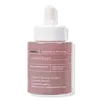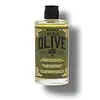What's inside
What's inside
 Key Ingredients
Key Ingredients

 Benefits
Benefits

 Concerns
Concerns

 Ingredients Side-by-side
Ingredients Side-by-side

Water
Skin ConditioningCaprylic/Capric Triglyceride
MaskingAscorbyl Tetraisopalmitate
AntioxidantRosa Canina Fruit Oil
EmollientGlycerin
HumectantSqualane
EmollientTocopheryl Acetate
AntioxidantBisabolol
MaskingDictyopteris Polypodioides Extract
EmollientEthylhexylglycerin
Skin ConditioningHelianthus Annuus Seed Oil
EmollientLactic Acid
BufferingLonicera Caprifolium Flower Extract
PerfumingLonicera Japonica Flower Extract
Skin ConditioningMelia Azadirachta Extract
Skin ConditioningMoringa Oleifera Seed Oil
EmollientPancratium Maritimum Extract
BleachingPanthenol
Skin ConditioningRosa Damascena Flower Oil
MaskingRosmarinus Officinalis Extract
AntimicrobialSodium Chloride
MaskingTocopherol
AntioxidantZingiber Officinale Root Extract
MaskingPotassium Sorbate
PreservativeSodium Benzoate
MaskingCitronellol
PerfumingGeraniol
PerfumingLinalool
PerfumingWild Boar Oil
HumectantWater, Caprylic/Capric Triglyceride, Ascorbyl Tetraisopalmitate, Rosa Canina Fruit Oil, Glycerin, Squalane, Tocopheryl Acetate, Bisabolol, Dictyopteris Polypodioides Extract, Ethylhexylglycerin, Helianthus Annuus Seed Oil, Lactic Acid, Lonicera Caprifolium Flower Extract, Lonicera Japonica Flower Extract, Melia Azadirachta Extract, Moringa Oleifera Seed Oil, Pancratium Maritimum Extract, Panthenol, Rosa Damascena Flower Oil, Rosmarinus Officinalis Extract, Sodium Chloride, Tocopherol, Zingiber Officinale Root Extract, Potassium Sorbate, Sodium Benzoate, Citronellol, Geraniol, Linalool, Wild Boar Oil
C13-15 Alkane
SolventCocoglycerides
EmollientOctyldodecanol
EmollientIsoamyl Laurate
EmollientCoco-Caprylate
EmollientAlcohol Denat.
AntimicrobialOlea Europaea Fruit Oil
MaskingHydrogenated Ethylhexyl Olivate
EmollientCrambe Abyssinica Seed Oil
Skin ConditioningEthylcellulose
Parfum
MaskingAlpha-Isomethyl Ionone
PerfumingWater
Skin ConditioningAscorbyl Tetraisopalmitate
AntioxidantBenzyl Salicylate
PerfumingCitral
PerfumingCitronellol
PerfumingCoumarin
PerfumingEthyl Linoleate
EmollientHelianthus Annuus Seed Oil
EmollientHydrogenated Olive Oil Unsaponifiables
EmollientLimonene
PerfumingLinalool
PerfumingTocopherol
AntioxidantTocopheryl Acetate
AntioxidantC13-15 Alkane, Cocoglycerides, Octyldodecanol, Isoamyl Laurate, Coco-Caprylate, Alcohol Denat., Olea Europaea Fruit Oil, Hydrogenated Ethylhexyl Olivate, Crambe Abyssinica Seed Oil, Ethylcellulose, Parfum, Alpha-Isomethyl Ionone, Water, Ascorbyl Tetraisopalmitate, Benzyl Salicylate, Citral, Citronellol, Coumarin, Ethyl Linoleate, Helianthus Annuus Seed Oil, Hydrogenated Olive Oil Unsaponifiables, Limonene, Linalool, Tocopherol, Tocopheryl Acetate
Ingredients Explained
These ingredients are found in both products.
Ingredients higher up in an ingredient list are typically present in a larger amount.
Ascorbyl Tetraisopalmitate is a version of ascorbic acid, or Vitamin C.
This ingredient has many benefits including reducing wrinkles, skin soothing, dark spot fading, and fighting against free radicals.
It helps with dark spot fading by interfering with the process of skin darkening, helping to reduce hyperpigmentation. Like other forms of vitamin C, this ingredient encourages the skin to create more collagen.
As an antioxidant, it helps fight free-radicals. Free-radicals are molecules that may damage your skin cells.
One study found Ascorbyl Tetraisopalmitate to degrade in sunlight, but is stabilized when combined with acetyl zingerone.
Learn more about Ascorbyl TetraisopalmitateCitronellol is used to add fragrance/parfum to a product. It is often derived from plants such as roses. In fact, it can be found in many essential oils including geranium, lavender, neroli, and more. The scent of Citronellol is often described as "fresh, grassy, and citrus-like".
Since the Citronellol molecule is already unstable, Citronellol becomes irritating on the skin when exposed to air.
Citronellol is a modified terpene. Terpenes are unsaturated hydrocarbons found in plants. They make up the primary part of essential oils.
Citronellol is not able to be absorbed into deeper layers of the skin. It has low permeability,
Citronellol is also a natural insect repellent.
Learn more about CitronellolHelianthus Annuus Seed Oil is the oil derived from the seeds of a Sunflower. Sunflower seed oil is non-fragrant. It is an emollient, meaning it helps to soften the skin.
Sunflower seed oil contains many fatty acids. The fatty acids found in sunflower seeds include (from highest amount to least): linoleic acid, myristic acid, palmitic acid, stearic acid, arachidic acid, oleic acid, and linolenic acid.
These fatty acids help the skin create ceramides. Ceramides play a role in repairing the skin barrier.
Helianthus Annuus Seed Oil helps moisturize the skin. This in turn helps the skin look more rejuvenated and smoother.
Sunflowers are rich in vitamin E.
Historians believe Indigenous cultures of North America domesticated sunflowers before corn. Thus they relied on sunflower oil for a variety of uses. One such use is moisturizing skin and hair.
Sunflower seed oil may not be fungal acne safe. We recommend speaking with a professional if you have any concerns.
Learn more about Helianthus Annuus Seed OilLinalool is a fragrance and helps add scent to products. It's derived from common plants such as cinnamon, mint, citrus, and lavender.
Like Limonene, this ingredient oxidizes when exposed to air. Oxidized linalool can cause allergies and skin sensitivity.
This ingredient has a scent that is floral, spicy tropical, and citrus-like.
Learn more about LinaloolTocopherol (also known as Vitamin E) is a common antioxidant used to help protect the skin from free-radicals and strengthen the skin barrier. It's also fat soluble - this means our skin is great at absorbing it.
Vitamin E also helps keep your natural skin lipids healthy. Your lipid skin barrier naturally consists of lipids, ceramides, and fatty acids. Vitamin E offers extra protection for your skin’s lipid barrier, keeping your skin healthy and nourished.
Another benefit is a bit of UV protection. Vitamin E helps reduce the damage caused by UVB rays. (It should not replace your sunscreen). Combining it with Vitamin C can decrease sunburned cells and hyperpigmentation after UV exposure.
You might have noticed Vitamin E + C often paired together. This is because it is great at stabilizing Vitamin C. Using the two together helps increase the effectiveness of both ingredients.
There are often claims that Vitamin E can reduce/prevent scarring, but these claims haven't been confirmed by scientific research.
Learn more about TocopherolTocopheryl Acetate is AKA Vitamin E. It is an antioxidant and protects your skin from free radicals. Free radicals damage the skin by breaking down collagen.
One study found using Tocopheryl Acetate with Vitamin C decreased the number of sunburned cells.
Tocopheryl Acetate is commonly found in both skincare and dietary supplements.
Learn more about Tocopheryl AcetateWater. It's the most common cosmetic ingredient of all. You'll usually see it at the top of ingredient lists, meaning that it makes up the largest part of the product.
So why is it so popular? Water most often acts as a solvent - this means that it helps dissolve other ingredients into the formulation.
You'll also recognize water as that liquid we all need to stay alive. If you see this, drink a glass of water. Stay hydrated!
Learn more about Water